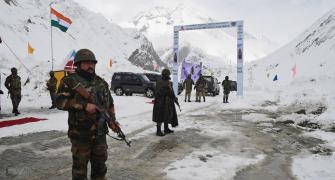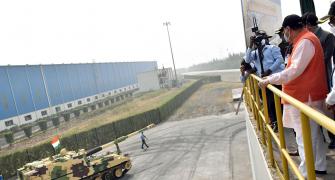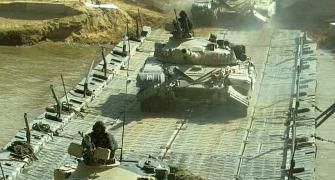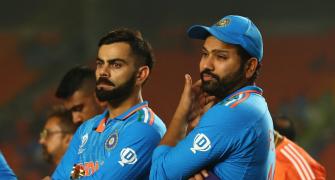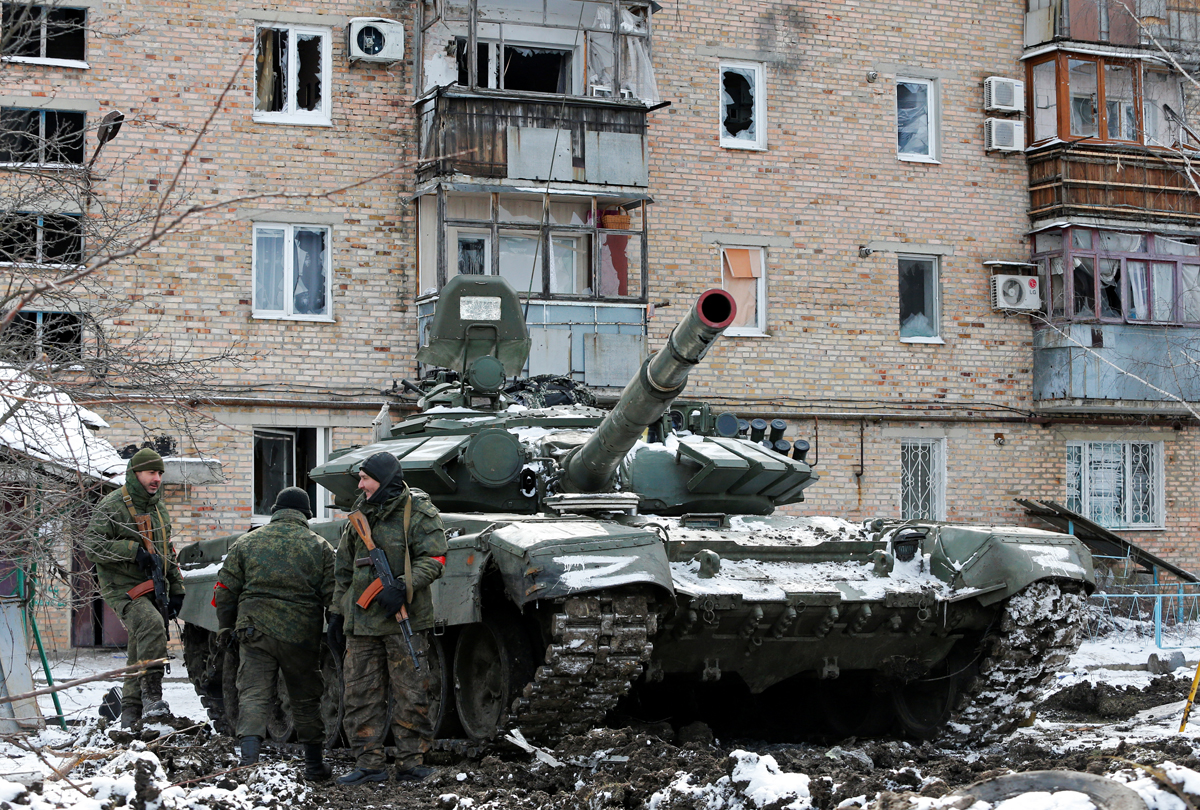'Those who say that conventional war is a thing of the past or that war is not an option, or that diplomacy alone can prevent war -- are wrong and we see that in Ukraine.'

"It is important to keep adapting to the changing character of war, both technologically and tactically. We have seen with the Chinese and Russian what happens when soldiers are not trained enough," says Lieutenant General A B Shivane (retd), former director general of the mechanised forces in the concluding part of the interview with Rediff.com's Archana Masih.
- Part I: 'Russia's 19th century tactics in 21st century war'
- Part II: 'In a war there will be kills on either side'

What, according to you, has been the foremost tank battle fought by the Indian Army? Where would you place it among the major tank battles in the world, and what were the reasons for its success?
We have had a rich history of tank warfare pre-Independence, but I will focus on the post-Independence period.
The bold and innovative employment of Stuart light tanks in Zojila at an unparalleled altitude of 11,575 feet saved Ladakh. The action repulsed the Pakistanis raiders.
In the 1962 War, the light tanks were airlifted by an aircraft and fought alongside the infantry battalion in the Battle of Gurung Hill in Chushul.
In the 1965 War, the tanks performed commendably in Chaminda, Phillora sector which forced Pakistan to recall its offensive in the Chamb Jaurian sector.
The epic Battle of Phillora was a saga of bravery between men and machine. We saw examples of superior tank men like Lieutenant Colonel A B Tarapore who got the Param Vir Chakra posthumously. The biggest tank battle since World War II took place in the Khem Karan sector.
Pakistan's 1 Armoured Division was annihilated and the sector was named as the graveyard of Pakistani tanks.
In 1971 -- the famous Battle of Basantar -- once again showed the spirit of the tank and tank man. Second Lieutenant Arun Khetarpal was honoured with the Param Vir Chakra for his supreme sacrifice and valour.
In the Eastern Sector, PT-76 amphibious tanks crossed the Meghna and played an important role in the Fall of Dacca.
In Operation Brasstacks in 1986-1987, tanks contributed in strategic messaging to the adversary about how we will function in a nuclear environment and in a conventional war.
Tanks were also deployed in Sri Lanka during the Indian Peace Keeping Mission.
In the terrorist attack in Samba in 2013, there was an innovative movement of tanks by the armoured regiment. Tanks were used to confine the terrorists in a building which made their subsequent neutralisation possible without any collateral damage.
Hence, sensing the importance of mechanised forces, the Indian Army has accordingly built up a sizable force to dominate its adversary.
Tanks play a very important role in the valleys and passes in high altitude. Therefore, tank commanders and tanks are both technologically and structurally adapted to these high altitude operational requirements and we saw that in April 2020 and subsequently.
Our tanks unnerved the Chinese and therefore, when they wanted to de-escalate, the first thing the Chinese sought was a withdrawal of our tanks.
Hence, the Indian Army has a very rich experience in tanks. We are a very professional army, we learn, evolve and perform with the changing character of warfare.
The mechanised forces, the armoured corps and the tank men believe they are inclusive in outlook, ferocious in performance and believe in fighting as a combined armed force.

Has the Ukraine experience cast a shadow over Russian tanks and equipment that the Indian Army has?
Or is the fault not in the equipment, but in the soldiers who manned it, the commanders who ran the operation?
The equipment used in Ukraine is good, but like I said earlier, the equipment is as good as the tank man and the tank man is as good as his training and technological expertise.
They were good tanks, but badly used. When a tank is lined up and moving slowly or is sitting, it is no more a tank, but a static pillbox.
It is important to keep adapting to the changing character of war, both technologically and tactically. We have seen with the Chinese and Russian what happens when soldiers are not trained enough.
Secondly, we need indigenous equipment. A tank is a very complex system. We have made the Arjun tank which is a very heavy tank. It is not suitable for a major portion of our operational environment, including against our primary adversary.
We have to evolve in tank design and manufacturing through indigenous capability through a well developed defence industrial base.
Till then, we have to leverage joint ventures and collaboration through strategic partnerships.
Conventional war is here to stay. Those who say that conventional war is a thing of the past or that war is not an option, or that diplomacy alone can prevent war -- are wrong and we see that in Ukraine.
There is a threat about that on our eastern and western borders.
Hence, defence, diplomacy and development are the pillars of a nation. A country cannot develop without a strong defence.
Defence is an insurance for the nation's security. We need a greater allocation of the defence budget, we need to invest in indigenous R&D capabilities which have not come up to the level that they should.
All these capabilities take time. Development of these systems takes 10 to 15 years, but the intentions of the adversary can change very fast.
Hence, we need to hasten both our capability building in kinetic and non-kinetic domains along with a positive development.
A lot is being done, but a lot more needs to be done.
Feature Presentation: Aslam Hunani/Rediff.com

